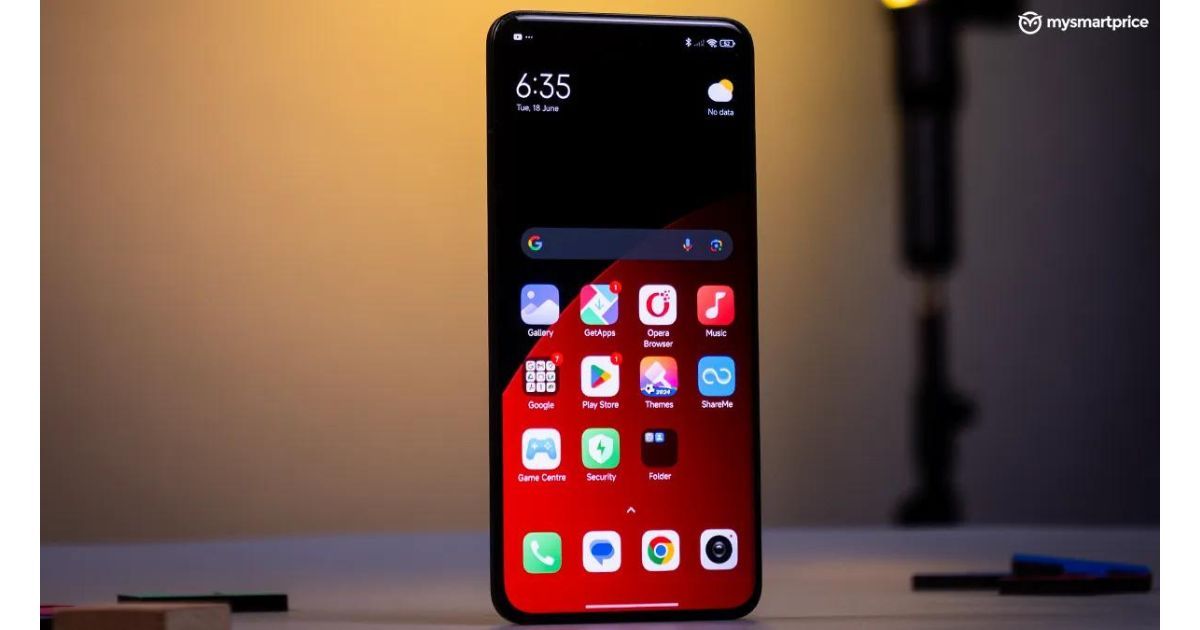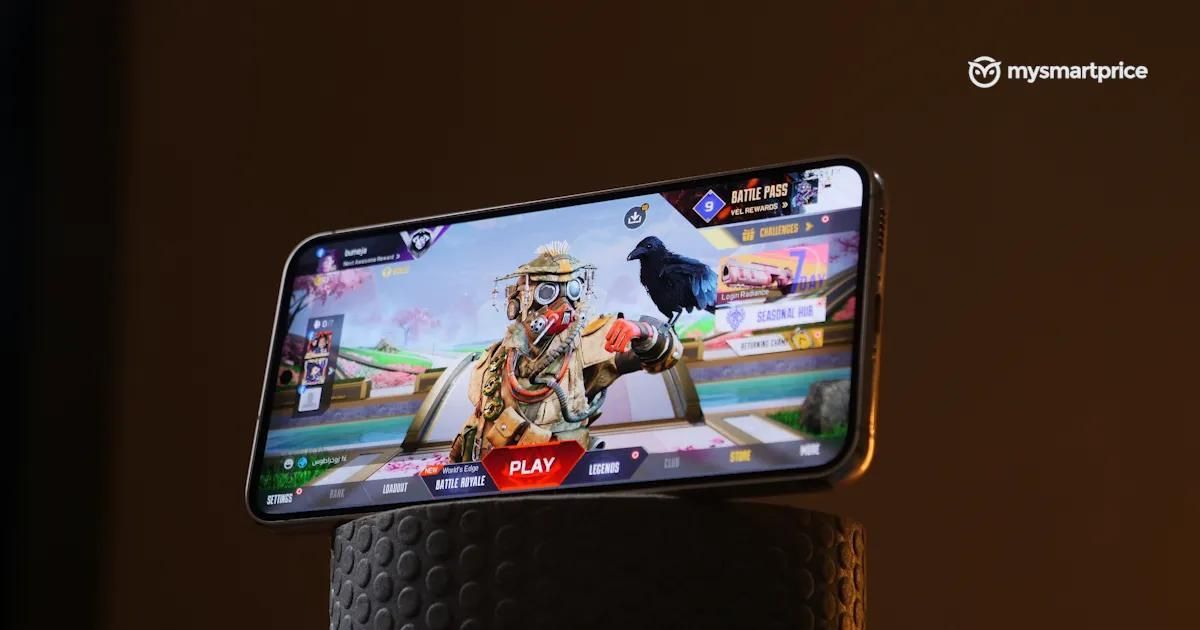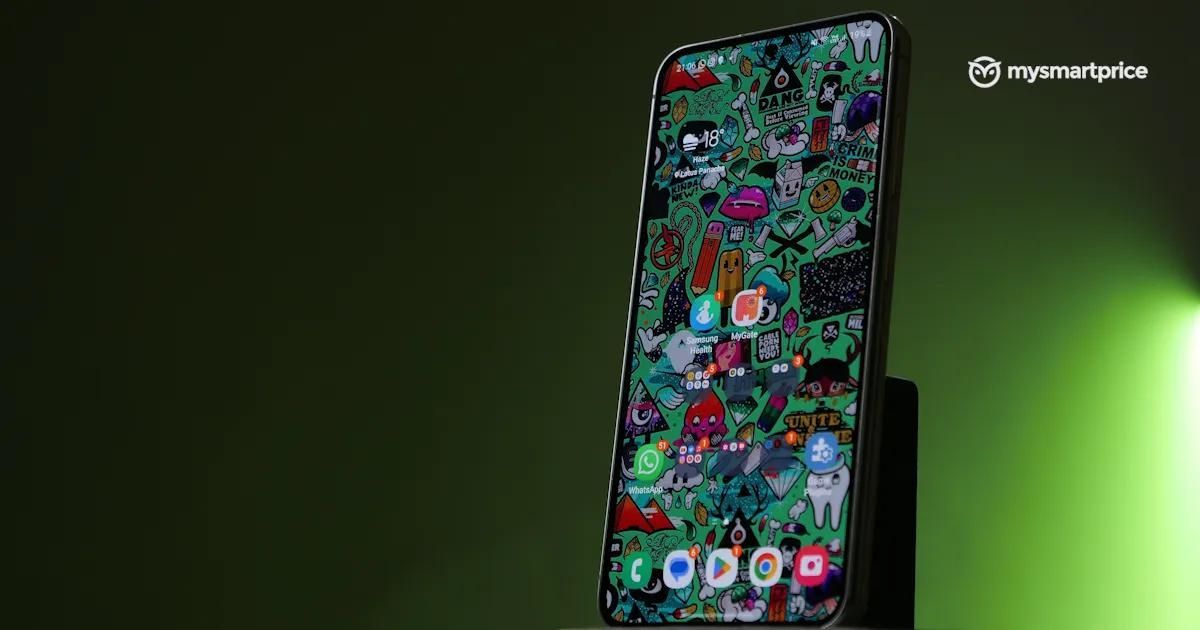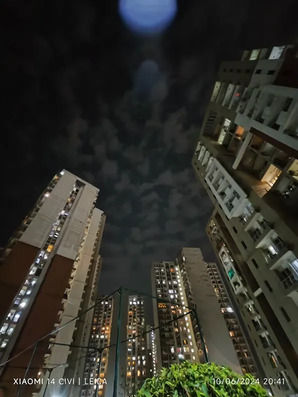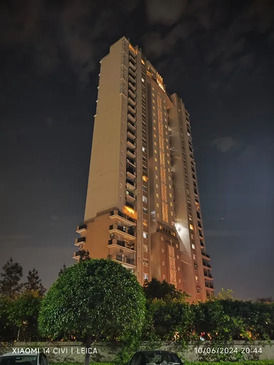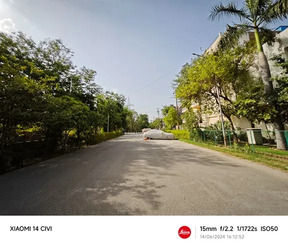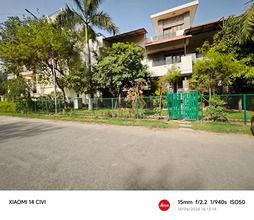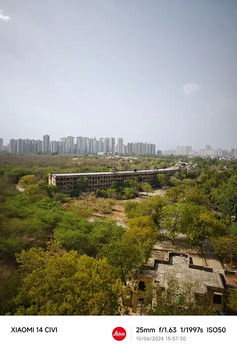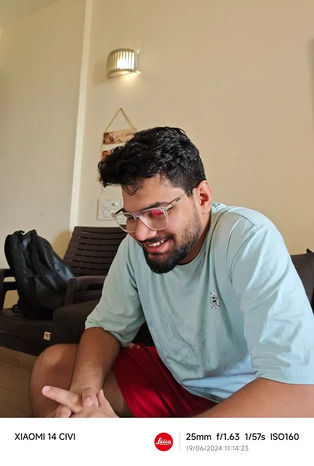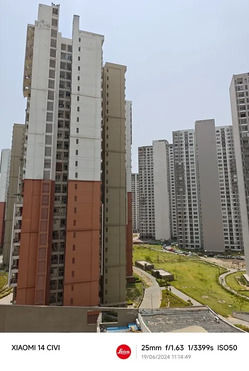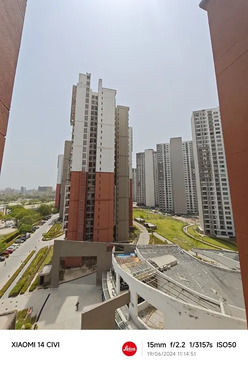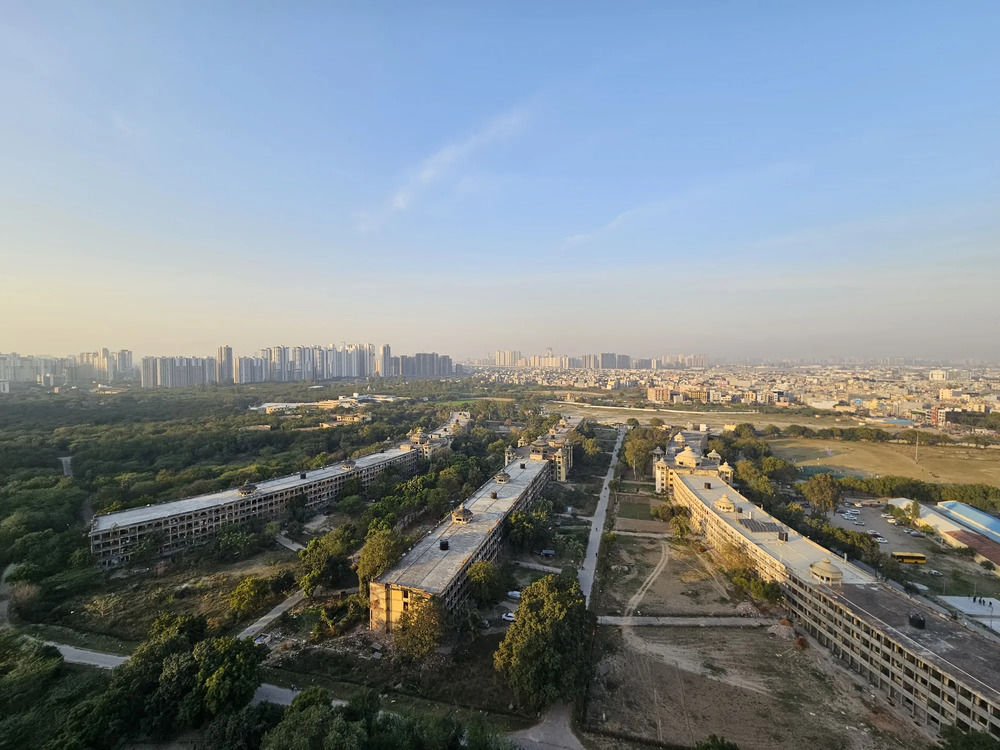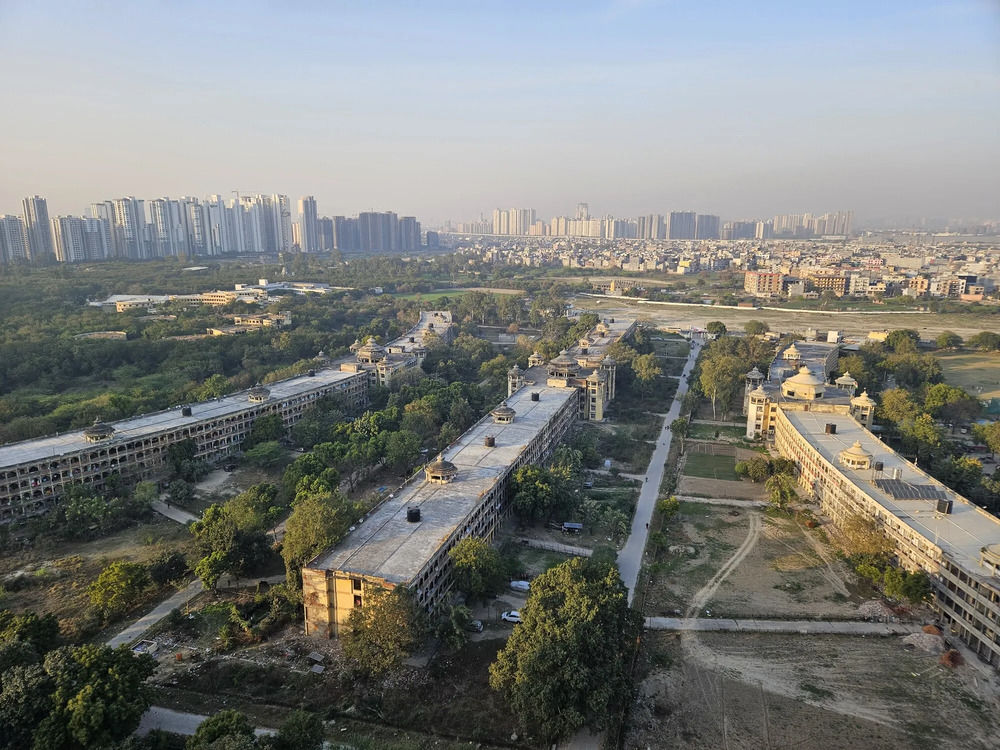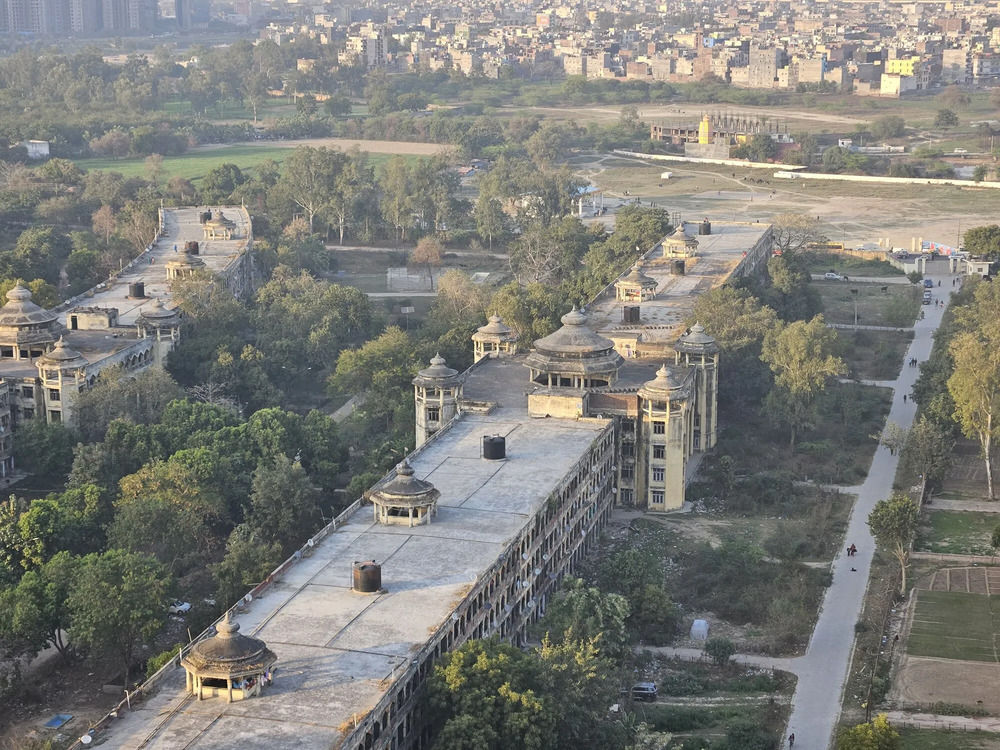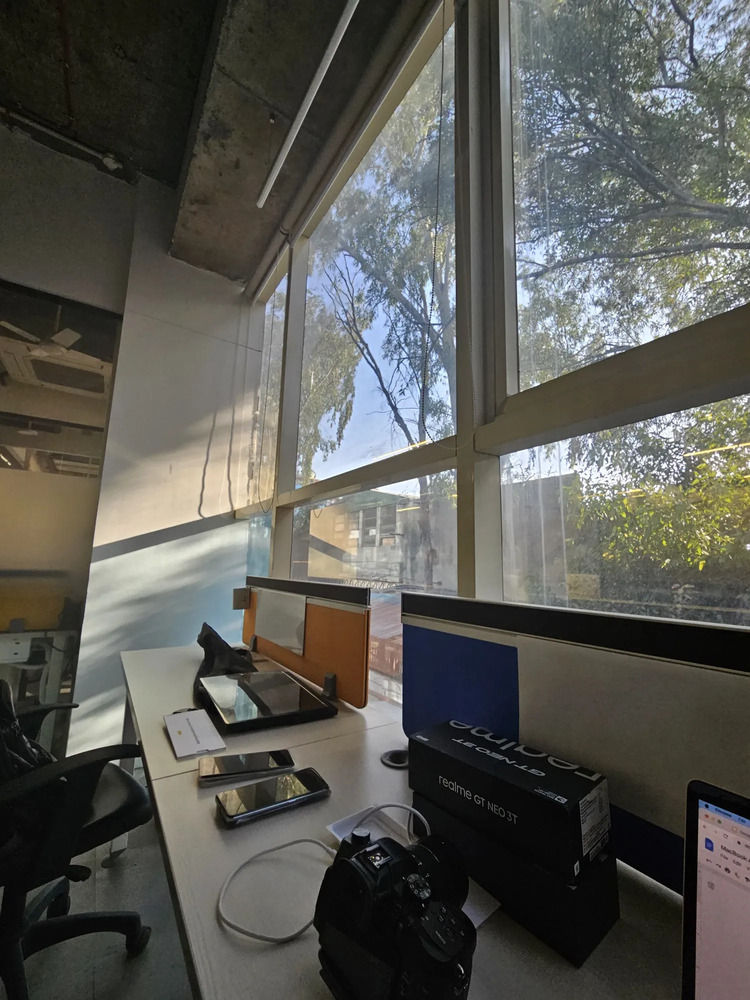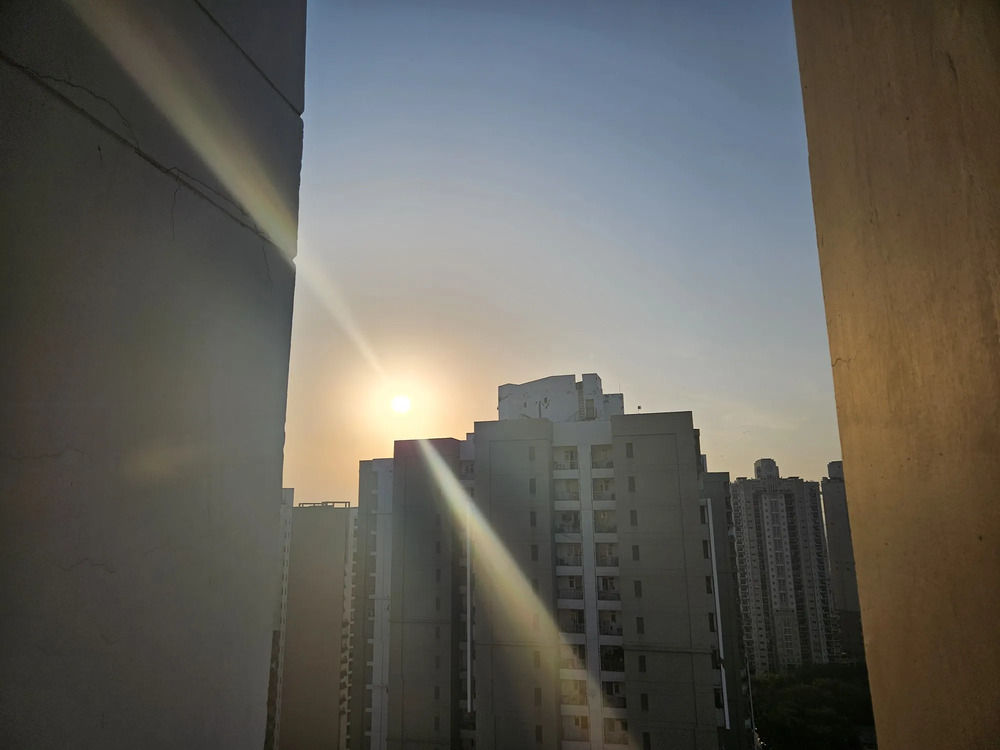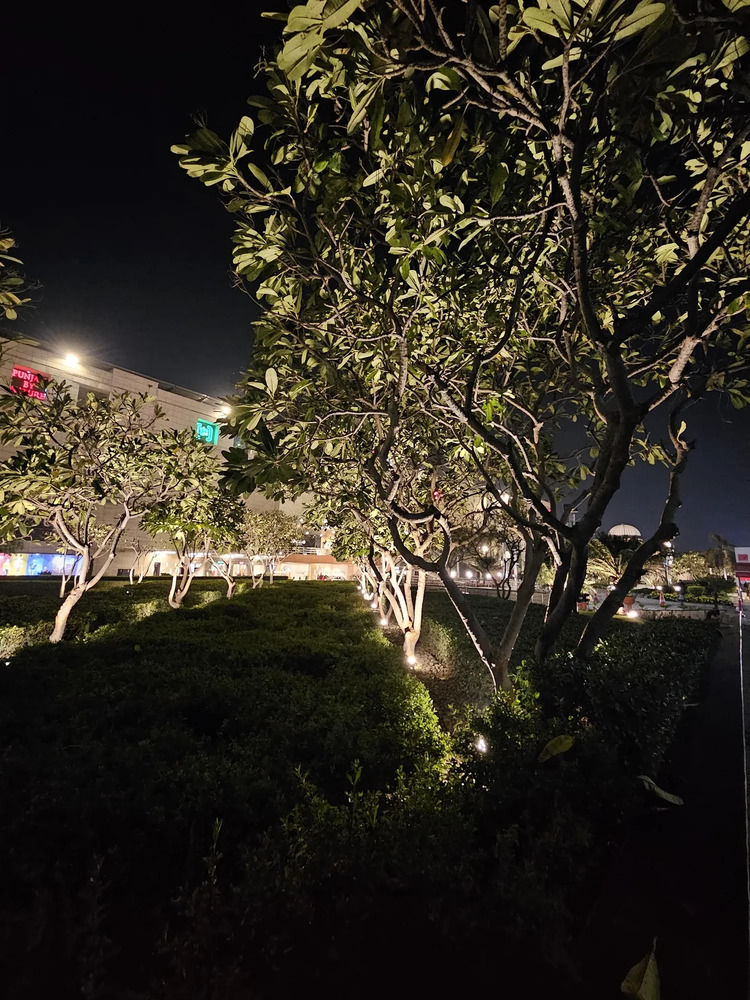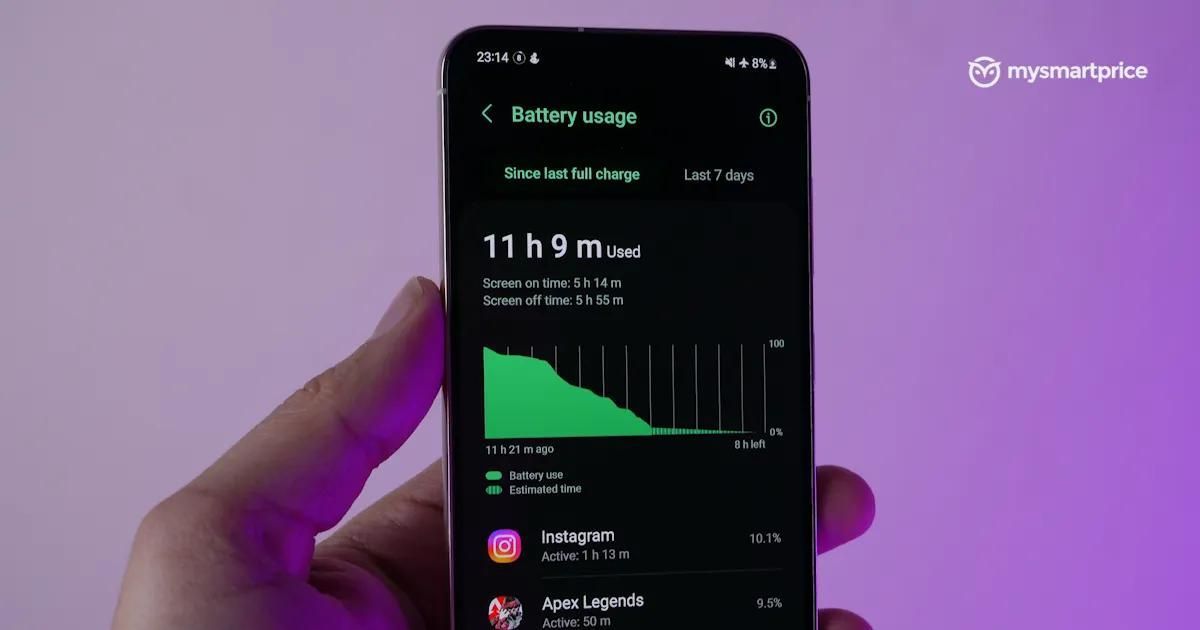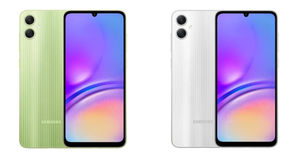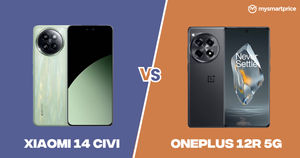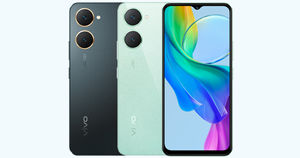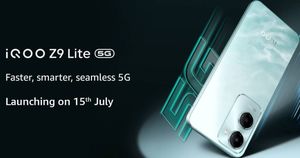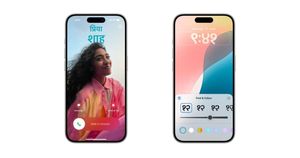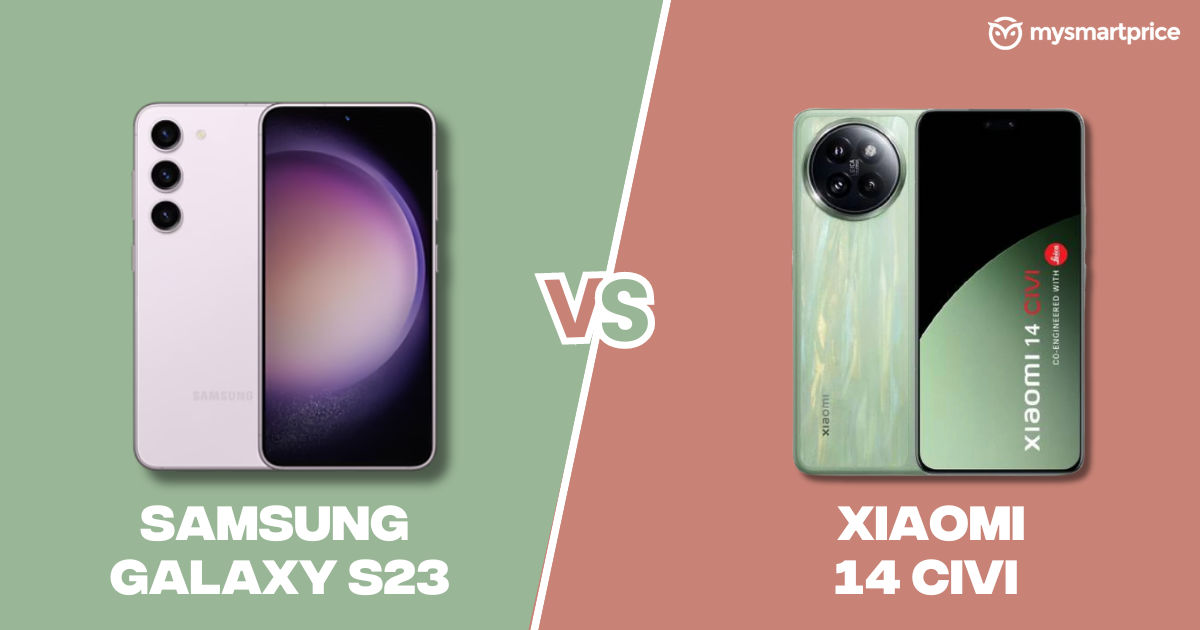
Xiaomi 14 Civi is the first Civi to arrive on Indian shores and is the company’s camera-centric budget flagship. However, it’s not going to be easy for Xiaomi’s latest premium offering, given that the Indian phone market already has some big names in the category. One device that stands out as a prime example is Samsung’s Galaxy S23.
Despite being a year-old device, the Galaxy S23 is still quite potent, even by 2024 standards. We have used both phones, so we decided to compare them so you can pick the best ‘budget’ flagship.
Xiaomi 14 Civi vs Samsung Galaxy S23: Price in India
| Model | Configuration | Price |
|
Xiaomi 14 Civi
|
8GB + 256GB | Rs 42,999 |
| 12GB + 512GB | Rs 47,999 | |
|
Samsung Galaxy S23
|
8GB + 128GB | Rs 46,999 |
| 8GB + 256GB | Rs 51,999 |
The Xiaomi 14 Civi starts at Rs 42,999, making it more affordable than the Galaxy S23, which starts at Rs 46,999. Besides, the Xiaomi 14 Civi is your only way out if you need more storage.
Xiaomi 14 Civi vs Samsung Galaxy S23: Design
| Xiaomi 14 Civi |
Samsung Galaxy S23
|
|
| Dimensions | 72.77 x 157.2 x 7.45 mm |
70.9 x 146.3 x 7.6 mm
|
| Weight | 179.3 g | 168 g |
| Colours | Cruise Blue, Matcha Green, Shadow Black |
Phantom Black, Cream, Green, Lavender
|
If you are into smaller premium devices, you will adore the Xiaomi 14 Civi and Galaxy S23. Both phones have a no-nonsense design without any flashy texture or exorbitantly bright colour.

Samsung sticks with its usual design language, which the South Korean conglomerate has used for a long time. In terms of build, the front and back of the Galaxy S23 are covered in Corning Gorilla Glass Victus 2, so durability is assured.

On the other hand, the Xiaomi 14 Civi is one of the most ergonomically sane devices we have used recently. It excels with its lightweight body and evenly distributed weight. Besides, the device is available in colours like Matcha Green and Cruise Blue. However, the classic Shadow Black remains our choice for its simplicity. That said, Xiaomi claims the Matcha Green colourway has a unique inlaid back glass pattern, meaning your phone’s back will be slightly different from others.
Xiaomi 14 Civi vs Samsung Galaxy S23: Display
| Xiaomi 14 Civi |
Samsung Galaxy S23
|
|
| Type | Quad-Curvev AMOLED (68B) |
AMOLED Screen (16M Colors)
|
| Size | 6.55 inches, 1236 x 2750 pixels, 120 Hz |
6.1 inches, 1080 x 2340 pixels, 120 Hz
|
| Aspect Ratio | 20.5:9 | 20.5:9 |
| PPI | ~ 446 PPI | ~ 422 PPI |
| Screen-to-Body Ratio | ~ 90.4% | ~ 88.1% |
| Glass Type | Corning Gorilla Glass Victus 2 |
Corning Gorilla Glass Victus 2
|
| Features | Dolby Vision, HDR10, HDR10+, 3000 nits Peak Brightness, Plays Dolby Vision Content, Cinematic Vision |
Always-on display, 1750nits Peak Brightness
|
When it comes to display, the Xiaomi 14 Civi flaunts its gorgeous, curved display, exuding a premium vibe. The panel offers excellent viewing angles and, thankfully, avoids accidental touches. Besides, there’s a 120Hz refresh rate, so smooth scrolling or swiping is a no-brainer for the device.
The company claims its peak brightness to be 3000 nits, but during our testing, it only managed to secure around 2000 nits, which is not bad either. The outdoor visibility is more than adequate.
Of course, Samsung offers some of the best display technology in the market, and the Galaxy S23 is no exception. It features a 6.1-inch display with 1,750 nits of maximum brightness, which seems too little compared to the Xiaomi 14 Civi on paper.
However, things start to get interesting when you learn that Samsung has added the Intelligent Vision Booster, which ensures better contrast even under harsh sunlight without washing out the colours too much.
The display excelled outdoors, remaining perfectly readable under the bright Delhi sun. This was especially helpful during our test, where we used the phone for navigation on a spring afternoon, even while wearing a helmet. The phone also shines in the video viewing department, offering a noticeable improvement over previous models, particularly when viewing content with very dark scenes.
Xiaomi 14 Civi vs Samsung Galaxy S23: Performance and UI
| Xiaomi 14 Civi |
Samsung Galaxy S23
|
|
| OS | Android v14 | Android v13 |
| Custom UI | HyperOS | One UI 5.1 |
| Chipset | Qualcomm Snapdragon 8s Gen3 |
Qualcomm Snapdragon 8 Gen 2
|
| CPU | 3 GHz, Octa Core Processor |
3.36 GHz, Octa Core Processor
|
| Core Details | 1×3.0 GHz Cortex-X4 & 4×2.8 GHz Cortex-A720 & 3×2.0 GHz Cortex-A520 |
1×3.36 GHz Cortex-X3 & 2×2.8 GHz Cortex-A715 & 2×2.8 GHz Cortex-A710 & 3×2.0 GHz Cortex-A510
|
| GPU | Adreno 735 | Adreno 740 |
Here, the story starts getting interesting. Xiaomi uses Qualcomm’s latest flagship SoC (Snapdragon 8s Gen 3), while the Galaxy S23 comes with the older Snapdragon 8 Gen 2 chipset. If your primary use cases for the device are simple tasks like calling, messaging, social media, email, etc., then you will not have any issues with either of these devices. They offer a flagship-grade experience in your daily activities.
But what about someone who likes to play heavy titles like BGMI and Call of Duty: Mobile? We have played both of these devices, and there’s nothing much to complain about.

While playing BGMI on Xiaomi 14 Civi, it delivered 90fps support with consistent performance, which helped us have a lovely chicken dinner. Besides, it kept things less toasty in a cooler environment.
Conversely, gaming on the Galaxy S23 does get warm, reaching temperatures around 37°C. However, this barely impacts gameplay. Apex Legends Mobile on Ultra HD graphics and High frame rates maintained a consistent 40 fps, with a slight dip to 32 fps during airdrops (which is expected). Call of Duty: Mobile thrived at a steady 60 fps even with graphics cranked to Very High.
We have also run benchmarks like AnTuTu and Geekbench on both devices, and here’s how they performed:
On the software front, the Xiaomi 14 Civi runs on the Android 14-based Hyper OS and offers three years of OS updates along with four years of security updates.
The Galaxy S23 launched with One UI 5.1 based on Android 13 and offers four years of OS and five years of security updates. However, the extra year of software support doesn’t matter now, as it’s already a year-old device. So it would not be wrong to say that both the phones have the same software support.
Note: Since we are on software, it’s important to remember that the Galaxy S23 will get all the latest Galaxy AI features, like circle-to-search, generative edit, live translation, and more.
Xiaomi 14 Civi vs Samsung Galaxy S23: Cameras
| Xiaomi 14 Civi |
Samsung Galaxy S23
|
|
| Rear Camera | 50 MP f/1.63 (Wide Angle) 50 MP f/2 (Telephoto) 12 MP f/2.2 (Ultra Wide) with autofocus |
50 MP 24mm, 1/1.56″, 1.0µm f/1.8 (Wide Angle)
10 MP 70mm, 1/3.94″, 1.0µm, 3x optical zoom f/2.4 (Telephoto) 12 MP 13mm, 120˚, 1/2.55″ 1.4µm, Dual Pixel PDAF, Super Steady video f/2.2 (Ultra Wide) with autofocus |
| Video Recording | 4K @ 60 fps UHD, 1080p @ 60 fps FHD, 720p |
8K @ 24/30 fps UHD, 4K @ 30 fps UHD, 1080p @ 30 fps FHD, 720p @ 960 fps HD
|
| Flash | Yes, Dual LED | Yes, LED |
| Front Camera | Punch Hole 32 MP f/2 (Wide Angle) 32 MP f/2.4 (Ultra Wide) |
Punch Hole 12 MP 26mm, Dual Pixel PDAF f/2.2 (Wide Angle)
|
| Front Video Recording | 4K @ 30 fps UHD, 1080p @ 30 fps FHD |
4K @ 30 fps UHD, 1080p @ 30 fps FHD
|
Now, let’s address the elephant in the room. Xiaomi has launched its first Civi in India as a camera-centric device. It comes with the Leica optics we have seen on the company’s flagship offerings, like the Xiaomi 14 Ultra. However, the question arises: Can Xiaomi deliver the same level of camera performance as the latest Xiaomi 14 Civi?
Well, the short answer is ‘Yes, almost’! Photos captured in daylight are richly detailed and exhibit a balanced dynamic range. The images are vivid and vibrant, especially with the Leica tuning set to ‘Authentic’. Shadows retain ample detail, and the camera performs well in most situations.
However, it occasionally overexposes photos, a flaw that could be addressed with a future update. After taking a photo, you can apply Leica filters directly from the gallery app.
The primary camera performs admirably in low-light conditions, capturing good photos in dimly lit areas. The images contain a fair amount of detail with minimal grain. Human subjects are also captured beautifully, though the camera tends to smooth out facial details even when filters and beautification settings are disabled.
The Galaxy S23’s camera system is conservative compared to its top-tier sibling. While it lacks the headline-grabbing 8K no-crop shooting, it offers night hyper-lapse for capturing starry night trails. Photography enthusiasts will appreciate the ability to shoot 50MP raw photos and leverage the Expert RAW app for astrophotography.
Apart from that, Samsung’s processing continues to favour vibrant photos with boosted blues and pinks. This translates to pleasing visuals for everyday users who might not want to spend time editing. However, those who prefer more natural colour tones or greater control over editing might find it less ideal.
Moreover, while taking portraits, the background receives a pleasing, natural bokeh effect. However, the primary sensor’s super-short depth-of-field can sometimes be problematic, especially in low light, as it tends to overly blur the corners. This issue is aggravated by the slower shutter speed, which tries to capture more light. To address this, we often had to manually lower the exposure and adjust the brightness during editing to achieve an optimal photo.
During the day, the ultrawide camera on the Galaxy S23 captures detailed photos with a consistent colour tone that matches the primary sensor. In low light, it tends to favour redder tones. The telephoto lens is also enjoyable, especially with the 3x portrait feature. It provides significant optical zoom for close-up shots of distant objects.
The Xiaomi 14 Civi excels with its dual front camera setup for selfies. It captures detailed photos and maintains true skin tones. Portrait mode also works well. On the other hand, the Galaxy S23’s front sensor offers amazing HDR capabilities, even with the blazing sun behind you. However, the camera’s low shutter speed at night can result in shaky selfies despite your best efforts.
Xiaomi 14 Civi vs Samsung Galaxy S23: Battery and Charging
The Xiaomi 14 Civi packs a 4700 mAh battery and supports 67W fast charging. Despite that, the phone managed to last an entire day with a fluctuation of moderate to heavy usage. We also ran a PCMark test on the device, and it survived about 12 hours and 22 minutes with the brightness set to 50 per cent. The Xiaomi 14 Civi went from 0 to 100% in just 45 minutes.
However, the Galaxy S23 does not offer great battery life or charging capabilities. It only packs a 3,900mAh battery and supports 25W charging, which resembles decade-old battery specs today. We achieved up to five hours of screen-on time on a relatively relaxed day. But on days when we pushed the device to its limits, this figure dropped to four hours. Fortunately, the screen-off time is excellent, thanks to the efficient management of background apps.
Verdict
Choosing a clear winner between these two devices is challenging, as both offer impressive performance, aesthetics, cameras, and more. However, if superior optics, battery life, and charging capabilities are your priorities, or if you need that slight edge in performance, the Xiaomi 14 Civi is the better option.
Conversely, if you’re interested in AI features and want to explore all Galaxy AI offers, the Samsung Galaxy S23 is the ideal choice. It is also perfect for those who want to taste Samsung’s flagship experience without breaking the bank.

